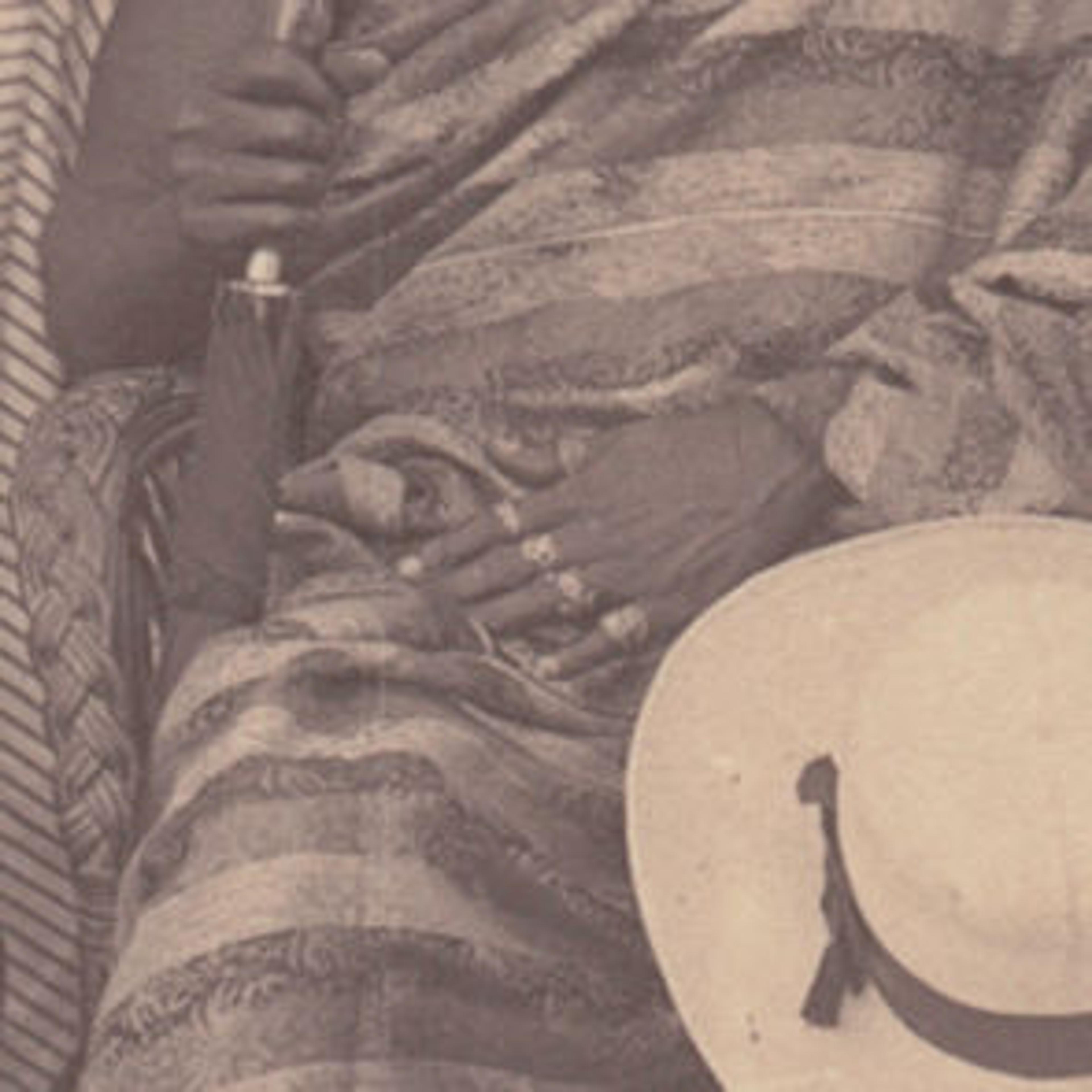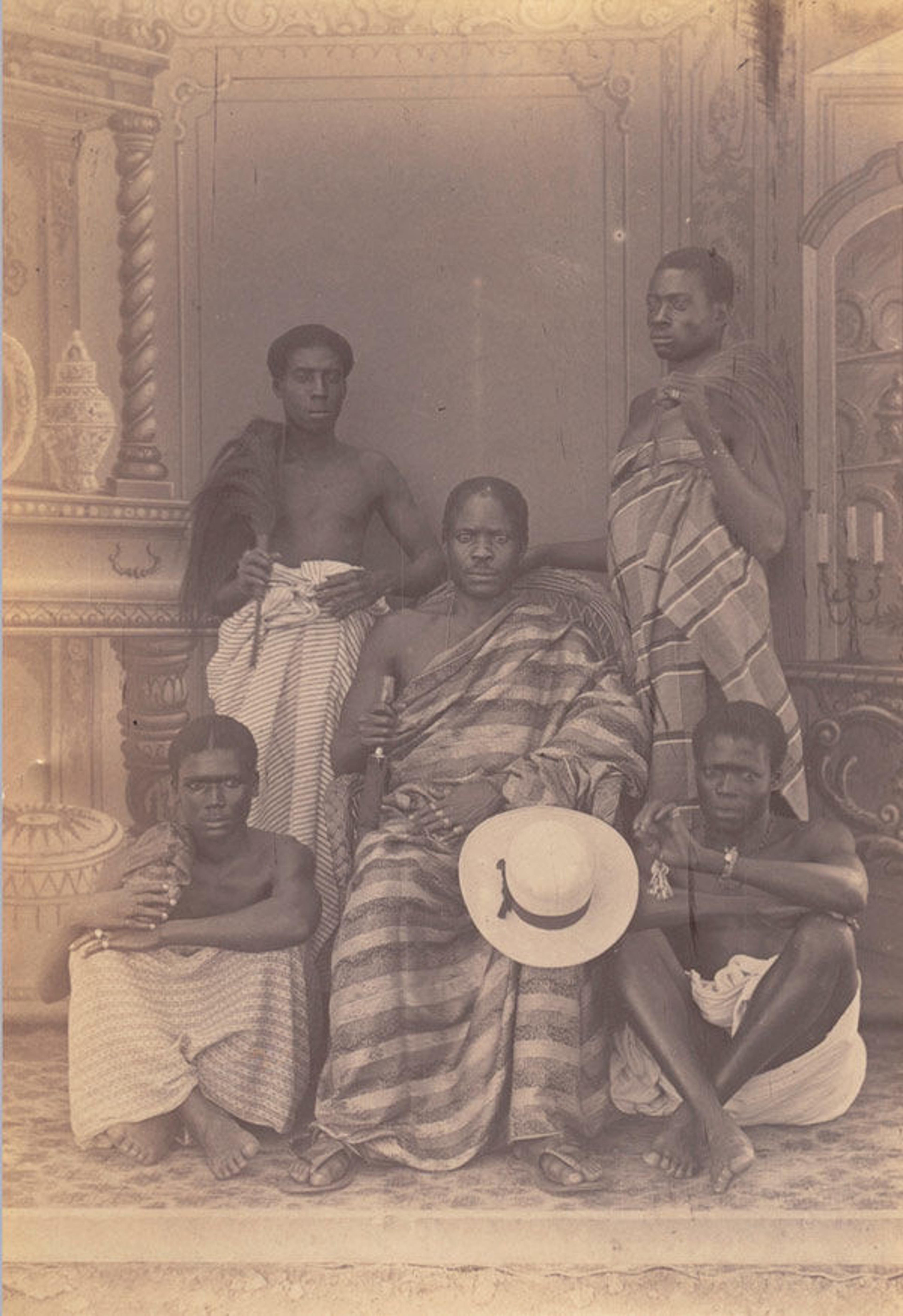
Albert George Lutterodt (Ghanaian, active from 1876) and George A. G. Lutterodt (Ghanaian, active from 1876). Five Men, ca. 1880–85. Albumen silver print from glass negative; 6 x 4 in. (15.2 x 1.5 cm). The Metropolitan Museum of Art, New York, Purchase, Ross Family Fund Gift, 1999 (1999.184.1)
From Yaëlle Biro, Associate Curator for the Arts of Africa:
While performing research for the exhibition In and Out of the Studio: Photographic Portraits from West Africa, my colleague Giulia Paoletti and I reached out to specialists in the field who shared with us their expertise on specific artists and on individual photographs represented in the collection. As the relatively young field of African photography has grown exponentially in the past decade, scholars have identified some of the earliest pioneers. Debunking the notions of anonymity long prevalent in approaches to African photography, close examination of specific images and careful archival research have allowed many photographers and their sitters to regain and reclaim their history. Here, Dr. Erin Haney's research on the Lutterodt family, an influential family of photographers in the Gold Coast (present-day Ghana), sheds new light on one photograph in the Met's collection.
«Who were those Gold Coast men? Lamentably, we are often missing crucial information on photographs from the 1880s. Still, it's worth making some educated guesses about what is signified in Albert George Lutterodt and George A. G. Lutterodt's Five Men. »
This photograph centers on individual status, which is why identification is key. The seated man is portrayed in his office of traditional authority, or perhaps as an oblempon (wealthy, influential man) from one of the many cities and towns dotting the littoral of the Gold Coast. Three attendants have tied their wrappers at the waist in deference, and a fourth towers over the central man protectively. The fly whisks, umbrella, pair of slippers perched on a shoulder, artfully held bundle of keys, and gestures in the photograph echo the performative signals seen in Gold Coast ceremonial settings. They are careful constructions of visibility, denoting wealth in property and people.
George Lutterodt and his son, Albert, were part of the first and second generation of the Accra family to work as itinerant photographers along the coast of West Africa, beginning with George and his two brothers in the 1870s. It's likely that the men in this image came to commission the portrait at the Accra studio or one of the itinerant set-ups, as is suggested by the dust still visible on their feet from walking.

The photographer arranged the group with care, elevating the ensemble in close space before a painted backdrop. The strong sun catches the artistry of each of the men's opulent gold rings, outlines their eyes, and flattens the immaculate perched hat.
Left: Detail of a hand in Five Men. Courtesy of Nora Kennedy
After advertising their pop-up studios starting in the 1870s, the Lutterodt studios gained renown in coastal West Africa, operating in Accra, Cape Coast, Elmina, and as far away as Freetown and the Bight of Benin. This extraordinary portrait was perhaps given as a gift or purchased as a souvenir image; it's unlikely to have been the only print made at the time. Its condition suggests it might have been folded into an album and stored far away from Ghana's humid coastal plains.
Working collaboratively with numerous family historians both in Ghana and internationally for two decades now, we know there is still much to do to piece together the Lutterodts' larger West African oeuvre. Their studios multiplied and expanded along the coast, and they apprenticed new West African photographers as they moved. The Lutterodts' photographic legacy is fragmentary, but, in Ghana, there are countless local historians tending to these photographic traces and artistries, which, in turn, comprise community and transnational photographic histories.
It's clearer than ever that the number of attributed images is tiny compared to the actual volume of Lutterodt's studio output. This is all the more astonishing given the endurance and breadth of their studio's expanse across West Africa from the early 1870s through the 1940s.
We have known for at least two decades that West African photography studios and itinerant photographers have been around since the 1860s, and global photography has never been the monopoly of European practitioners or technologies. Yet old assumptions about photography's Western origins remain surprisingly intact, rarely troubled by the long line of scholarship that has worked to reorient and reveal these interconnected histories of global photography.
